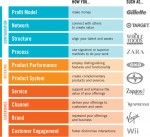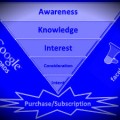We are all striving to do more with less. Our goal at the end of our corporate day is to bring home as much money as possible for the least amount of effort while respecting our values. So why am I, a marketing consultant, about to tell you how to reduce your maketing and sales costs? Very simple, a minimal marketing effort requires less effort to bring in larger payouts. It also is more strategic in nature and often requires a higher knowledge and experience base to bring in maximum results.
So what is this big secret to reducing your marketing and sales costs you ask? Innovation is the answer. Whatever it is you want to sell, the more innovative it is, the less marketing and sales effort you will need.
Great you say, but my product/service already exists and it’s not that innovative. So can I still get in on minimising, or at least significantly reducing, my commercialisation costs? There is good news for you because the answer is a resounding yes.
Innovation is a term that has been so overused that it is now jaded. Actually, if you google innovation, you will easily find a dozen different definitions for it. The definition that I like because of its simplicity and makes the most sense in the business world is that of the Ten Types of Innovation by Larry Keeley et al. They define innovation very simply as the creation of a viable new offering.
It implies that innovation will not appear by itself, it needs to be created. It also incorporates the notion of viability. Because it fills a significant need in the market, a true innovation will earn its keep and return money to your organisation. It also uses the term offering and not product. All too often we tend to think of innovation as a new product. Most innovations are not. Take Zappos for instance, they didn’t innovate on the shoes they sell. They simply found a way to offer the type of shopping experience online shoppers wanted. Many other online retailers are now trying to copy Zappos’ model. This is also a way to recognise an innovation. Others will try to copy it.
Keeley identified ten types of innovations that he categorised in three separate groups.
- Configuration innovations, that pertain to profit model, network, structure or process.
- Offering innovations, that pertain to product performance or product system.
- Experience innovations, that pertain to service, channel, brand or customer engagement.
See the clickable image below for more details and examples.
Innovations can also be stacked. You can address various unfilled needs in your market by combining multiple types of innovations. The point is the more itches you scratch in the market; the more customers will be drawn naturally to your offering and hence reduce your marketing and sales costs.
Have you ever noticed that when you go to buy something that you are highly excited about, that’s where the longest line up is? It happened to me while at a food truck fair. There was a food truck I had heard of from a friend and looking forward to eating from. It offers the type of food I like, with top quality ingredients and beautifully prepared. They serve it in a way that, despite the food being messy in nature, can be eaten easily standing up. They also offer original drinks that you don’t find anywhere else. The guy and gal serving the food are also hilarious as they are costumed and put on an act while serving you. So, wouldn’t you know it, when we got to the fair, this truck had a line up that was easily three times longer than the other longest line up. Fortunately for impatient and hungry me they also offer noshers and sample drinks to the folks waiting in line.
These folks were innovating on all fronts it seemed. Yet, when I got back home I tried to find them on the web (no website, Facebook page or Twitter account like others) all I could find was their name and usual location and opening hours on the city’s list of food trucks, customer reviews, and mentions in articles and food blogs. I also had not seen any advertising for them around the city and in newspapers like I did for other food trucks. Luckily I had kept the cute reusable fork they gave with their logo and where and when to find them on the back.
It is obvious that they had a marketing strategy, despite not spending nearly as much on marketing as their competitors, since hundreds of customers had found them at the food fair.
In a future post we will delve into how to go about marketing innovations.










